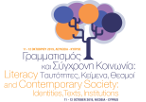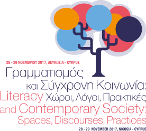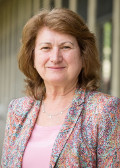| Sitemap | Disclaimer | Contact |
- ΠΑ.ΒΙ.Σ.
- CERE
- CDU
-
Educational Technology Department
- Homepage
-
Research Programmes
- Πρόγραμμα Επιμόρφωσης Εκπαιδευτικών για την Ανάπτυξη Ψηφιακής Ικανότητας (ΠΕΕΑΨΙ)
- Καινοτόμα Σχολεία και Εκπαιδευτικοί Πυρήνες
- Ασφαλές Σχολείο για το Διαδίκτυο
- Ψηφιακοί Πρωτοπόροι
- Μαθητικό Διαδικτυακό Ραδιόφωνο
- Καταγράφουμε τη Μνήμη - Παραγωγή Nτοκιμαντέρ από Μαθητές και Μαθήτριες
- Μικροί Εκπαιδευτές για το Διαδίκτυο
- Competitions
- Πλαίσια Ψηφιακών Ικανοτήτων
- Conferences
- Audiovisual Material
- Technical Support
- On-line Libraries
- Educational Documentation Department
-
In-service Training Department
- Homepage
-
Programmes – Seminars
- Πρόγραμμα Υποστήριξης Επαγγελματικής Μάθησης Παιδαγωγικού Ινστιτούτου
- School-based Seminars
- Πρόγραμμα Επαγγελματικής Μάθησης «Ενδυναμώνοντας τις μελλοντικές γενιές στην Κύπρο»
- Πρόγραμμα αντιρατσιστικής πολιτικής
- Seminars for Parents
- Optional In-service Training Seminars
- Seminar on the Teaching of Physics
- Αγωγή Υγείας
- In-service Training Programme for School Leaders
- Training Programme for Greek origin Teachers from abroad
- Πρόγραμμα Επιμόρφωσης Ομογενών Εκπαιδευτικών Αμερικής
- Training Programme for Candidate Technology Teachers
- Εκπαιδευτική Ένταξη Παιδιών με Μεταναστευτική Βιογραφία
- Οι εκπαιδευτικοί μιλούν για το έργο τους
- Επιμορφωτικό πρόγραμμα για αντικαταστάτες εκπαιδευτικούς
- Διήμερο Επιμόρφωσης Εκπαιδευτικών Προσχολικής, Δημοτικής και Ειδικής Εκπαίδευσης
- Επιχειρηματικότητα στην Εκπαίδευση
- Δίκτυο Σχολείων Υποστήριξης της Φιλαναγνωσίας
- Δέκαθλο Φυσικών Επιστημών
- Archive for the In-service Training Programmes
- Conferences – Workshops
- Educational Material
- Training Material
- Ισότητα των Φύλων στην Εκπαίδευση
- Ενεργός Πολιτότητα
- Contacts
 Workshops
Workshops
Literacy and Contemporary Society - Keynote Speakers
| Home | Submission Forms | Guidelines for Abstracts | Conference Committees | Programme |
| Keynote Speakers | Dates | Abstracts - Proceedings | Useful Information | Announcements - Circulars |

Communication
Email for Abstracts
 This e-mail address is being protected from spambots. You need JavaScript enabled to view it
This e-mail address is being protected from spambots. You need JavaScript enabled to view it
Spyros Sofokleous
 +357 22402485
+357 22402485
 This e-mail address is being protected from spambots. You need JavaScript enabled to view it
This e-mail address is being protected from spambots. You need JavaScript enabled to view it

1st International Conference: Literacy and Contemporary Society (October 2015)

2nd International Conference: Literacy and Contemporary Society (November 2017)

Mike Baynham,
Professor,
University
of Leeds
(CV)
From events to assemblages: transborder literacies in an embordered world
In this talk I will briefly review the shift that took place several decades ago now from seeing literacy as something that belonged in the mind to something that exists in and radically constitutes the social world (cf Baynham & Prinsloo eds. 2009). This shift involved taking a social or ethnographic approach to literacy with a focus on texts, practices and events in situated contexts. So what has changed in the intervening decades and how do we have to re-think the study of literacy as a consequence? I will point to two social change phenomena which have challenged literacy researchers, both much documented and written about: firstly the proliferation of on-line and social media and the consequent re-organization of work, which has led to a displacement from the situated here-and-now (think about call centres) and distribution of literacy activity across time and space, involving both human and non-human actors. This displacement of the settled time/space of literacy activity, described by Kell (2009, 2015) as “transcontextual” leads us to re-think the idea of the literacy event, with its implication of the Aristotelean unities of time and place. Here I argue that the notion of assemblages and bricolage helps to understand this bringing together of different actors and materialities from different time/spaces in literacy activity. The second challenge concerns the much documented increase in global mobility and flows, now countered in many parts of the world by a closing and securing of borders, particularly against the poor, as a consequence of paranoid nationalism. This leads to a focus on literacies across borders (the mobilities and flows dimension) and literacies around borders, negotiating and challenging the contemporary hardening of borders with and on the behalf of those marginalized and excluded by them, such as asylum seekers, refugees and economic migrants as well of course as other excluded economically and socially precarious groups. It should be pointed out, as Mezzadra and Neilson do in their Border as Method (Mezzadra & Neilson 2013) that borders do not just operate between nation states, but can also operate to regulate, fragment and divide within the state, for example in the relations between institutions (education, social security, law) and those who negotiate with them. The existence of such borders and the practices that constitute them leads to a proliferation of agencies and organizations as well as work roles (community interpreter, advocate) which spring up to negotiate and mediate cross border. I will illustrate this discussion with examples of transborder literacy mediation and advocacy, focussing on community interpreting, mediation and advocacy in housing and benefits advice with Roma people in Leeds and legal advice around immigration issues, showing how literacy activity can be understood as assemblage across time and space and how these assemblages involve mediation. These examples are drawn from the recently completed TLANG project (Creese et al).
References
Baynham, Mike & Mastin Prinsloo (eds.) (2009) The Future of Literacy Studies. London: Palgrave.
Creese,Angela et al Translation and Translanguaging (TLANG) https://tlang.org.uk/
Kell, Catherine (2009) Literacy practices, Text(s) and Meaning Making across Time and Space.In Baynham & Prinsloo (eds.), pp 75-99.
Kell, C. (2016) Literacy, mobile texts and translocal literacies. In Canagarajah, S. (ed) The Routledge Handbook of Migration and Language. London: Routledge.
Mezzadra, Sandro & Brett Neilson (2013) Border as Method, or, the Multiplication of Labor. Durham: Duke University Press.

Bill Cope,
Professor,
University
of Illinois
(CV)
E-learning Ecologies: Innovative Approaches to Teaching and Learning for the Digital Age
For three decades and longer we have heard educators and technologists making a case for the transformative power of technology in learning. However, despite the rhetoric, in many ways and at most institutional sites, education is still relatively untouched by technology. Even when technologies are introduced, the changes sometimes seem insignificant and the results seem disappointing. If the print textbook is replaced by an e-book, do the social relations of knowledge and learning necessarily change at all or for the better? If the pen-and-paper test is mechanized, does this change the nature of our assessment systems? Technology, in other words, need not necessarily bring significant change. Technology might not even represent a step forward in education.
But what might be new? How can we use technologies to innovate in education? This presentation explores seven affordances of e-learning ecologies, which open up genuine possibilities for what we call “New Learning” – transformative, 21st century learning: 1. Ubiquitous Learning; 2. Active Knowledge Making; 3. Multimodal Meaning; 4. Recursive Feedback; 5. Collaborative Intelligence; 6. Metacognition; 7. Differentiated Learning.
These affordances, if recognized and harnessed, will prepare learners for success in a world that is increasingly dominated by digital information flows and tools for communication in the workplace, public spaces, and personal life. This presentation offers a wide variety of examples of learning technologies and technology implementations that, to varying degrees, demonstrate these affordances in action.

Alexandra Georgakopoulou,
Professor,
King’s College
London
(CV)
Sharing (Instaworthy) life-in-the-moment: On the social media apps’ co-opting of ‘my’/‘your’ story
Stories on social media are increasingly becoming algorithmically designed, engineered features, integrated into the spatial architecture of platform affordances, as the hugely popular feature of Stories on Instagram and Snapchat shows. Although there can be no deterministic relationship between the design of stories and the users’ actual communicative choices when posting stories, it has by now been amply demonstrated that media-affordances encourage and incentivize users to opt for specific ways of self-presentation and interaction, while constraining others. Story-design, often described by apps as ‘curation’, thus needs to be investigated for what kinds of lives (and ‘life-writing’, ‘biographing’) and subjectivities it promotes, especially to users who are pre-positioned by apps as beta/target users (i.e. generation Z, the millennials & Influencers). In my talk, I will draw on the ERC project ‘Life-writing of the moment: The sharing and updating self on social media’ (www.ego-media.org), where I have been tracking evolving affordances and users’ communicative practices in relation to, what I view, as a media directive to users to share their everyday life as breaking news, snapshots on the go. Using findings from a corpus-assisted discourse analysis of the label ‘story/stories’ in online media, a digital ethnography of ego-centred apps’ (Facebook, Snapchat, Instagram) evolution and a small stories analysis of Instagram Stories’ Influencers, I will unpick this sharing-life-in-the-moment directive: What activities are viewed and branded as a (good) story by apps, and with what semiotic and other facilities are they supported? Who is positioned as an ideal, creative, authentic storyteller? Why? And what is at stake for users in terms of complying with or resisting and counter-acting the proposed, templatized modes of storying? In addressing these questions, I will show –and worry about- the role of various (in)visible metrics in the design and practices of both posting and engaging with stories.

Mary Kalantzis,
Professor,
University
of Illinois
(CV)
Multiliteracies and “Transpositional Grammar:” Reframing Multimodal Meaning Making
This presentation outlines the key concepts of Multiliteracies, as they have evolved since the mid 1990s. The term “Multiliteracies” refers to two major aspects of language use today. The first is the variability of meaning making in different cultural, social or domain-specific contexts. These differences are becoming ever more significant to our communications environment. The second aspect of language use today arises in part from the characteristics of the new information and communications media. Meaning is made in ways that are increasingly multimodal—in which written-linguistic modes of meaning interface with oral, visual, audio, gestural, tactile and spatial patterns of meaning.
In our most recent development of this theory, we propose a “transpositional grammar,” a framework for describing and analyzing different forms of meaning—text, image, space, body, sound and speech. We make the case that across all of these forms, meaning can be expressed in terms of five functions: reference, agency, structure, context, and interest. Not only is this grammar multimodal in its scope. It also suggests a move away from categorically rigid and language-centered understandings of meaning. Transpositional grammar tracks constant movement, recognizing that meanings shift backwards and forwards across the different forms, the one complementing the other for the peculiarities of its media—its affordances. Meanings also shift functionally. A singular instance is always about to become a countable concept. A self-centered “I” is always about to become an empathetic “other.” Entities can be understood in terms of the actions by which they have been constituted. In these ways and many others like them, all the meanings in the world are always on the move. A transpositional grammar sets out to capture the impatience of these movements.
© 2010-2025 Cyprus Pedagogical Institute
Educational Technology Department
Privacy policy

